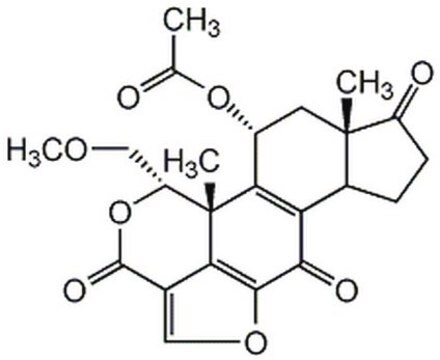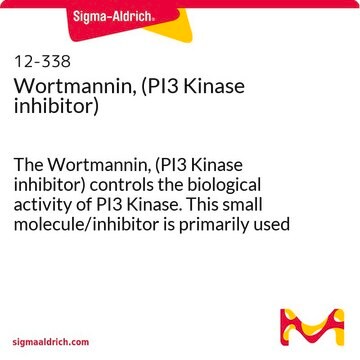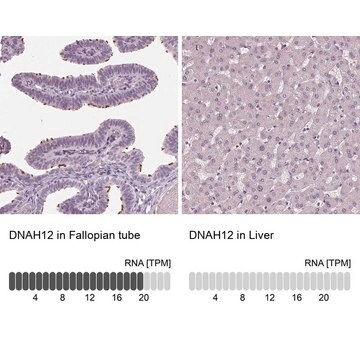07-1341
Anti-PHLPP1-Antikörper
from rabbit, purified by affinity chromatography
Synonym(e):
PH domain and leucine rich repeat protein phosphatase, PH domain leucine-rich repeat protein phosphatase, Pleckstrin homology domain-containing family E protein 1, SCN circadian oscillatory protein, Suprachiasmatic nucleus circadian oscillatory protein
About This Item
Empfohlene Produkte
Biologische Quelle
rabbit
Qualitätsniveau
Konjugat
conjugate
Antikörperform
affinity isolated antibody
Antikörper-Produkttyp
primary antibodies
Klon
polyclonal
Form
liquid
Aufgereinigt durch
affinity chromatography
Speziesreaktivität
rat, mouse, human
Methode(n)
immunocytochemistry: suitable
western blot: suitable
Immunogene Sequenz
KLH-conjugated linear peptide corresponding to the C-terminus of PHLPP1.
NCBI-Hinterlegungsnummer
UniProt-Hinterlegungsnummer
Versandbedingung
wet ice
Lagertemp.
2-8°C
Angaben zum Gen
human ... PHLPP1(23239)
Allgemeine Beschreibung
Spezifität
Immunogen
Anwendung
PI3K-, Akt- & mTOR-Signalisierung
Signalisierung
Qualität
Western-Blot-Analyse: Eine 1:1.000 Verdünnung dieses Antikörpers wies PHLPP1 in menschlichem Hirngewebelysat nach.
Zielbeschreibung
Physikalische Form
Lagerung und Haltbarkeit
Hinweis zur Analyse
Gewebelysat aus menschlichem Hirngewebe
Sonstige Hinweise
Haftungsausschluss
Sie haben nicht das passende Produkt gefunden?
Probieren Sie unser Produkt-Auswahlhilfe. aus.
Lagerklassenschlüssel
12 - Non Combustible Liquids
WGK
WGK 1
Flammpunkt (°F)
Not applicable
Flammpunkt (°C)
Not applicable
Analysenzertifikate (COA)
Suchen Sie nach Analysenzertifikate (COA), indem Sie die Lot-/Chargennummer des Produkts eingeben. Lot- und Chargennummern sind auf dem Produktetikett hinter den Wörtern ‘Lot’ oder ‘Batch’ (Lot oder Charge) zu finden.
Besitzen Sie dieses Produkt bereits?
In der Dokumentenbibliothek finden Sie die Dokumentation zu den Produkten, die Sie kürzlich erworben haben.
Unser Team von Wissenschaftlern verfügt über Erfahrung in allen Forschungsbereichen einschließlich Life Science, Materialwissenschaften, chemischer Synthese, Chromatographie, Analytik und vielen mehr..
Setzen Sie sich mit dem technischen Dienst in Verbindung.








